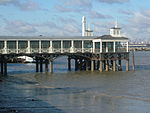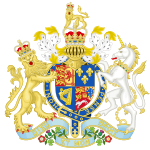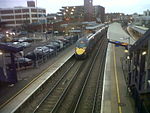Tilbury Riverside railway station
Disused railway stations in EssexFormer London, Tilbury and Southend Railway stationsGrade II* listed buildings in EssexPages with no open date in Infobox stationRailway depots in England ... and 5 more
Railway stations in Great Britain closed in 1992Railway stations in Great Britain opened in 1854TilburyTransport in ThurrockUse British English from March 2012

Tilbury Riverside railway station is a closed railway station located in the town of Tilbury in the borough and unitary authority of Thurrock in Essex, England, south of a triangular junction on the railway between Tilbury Town and East Tilbury. The station was 22 miles 46 chains (36.33 km) down the line from London Fenchurch Street station via Rainham.
Excerpt from the Wikipedia article Tilbury Riverside railway station (License: CC BY-SA 3.0, Authors, Images).Tilbury Riverside railway station
Fort Road, Thurrock
Geographical coordinates (GPS) Address Nearby Places Show on map
Geographical coordinates (GPS)
| Latitude | Longitude |
|---|---|
| N 51.4519 ° | E 0.3646 ° |
Address
Fort Road
Fort Road
RM18 7NJ Thurrock
England, United Kingdom
Open on Google Maps








